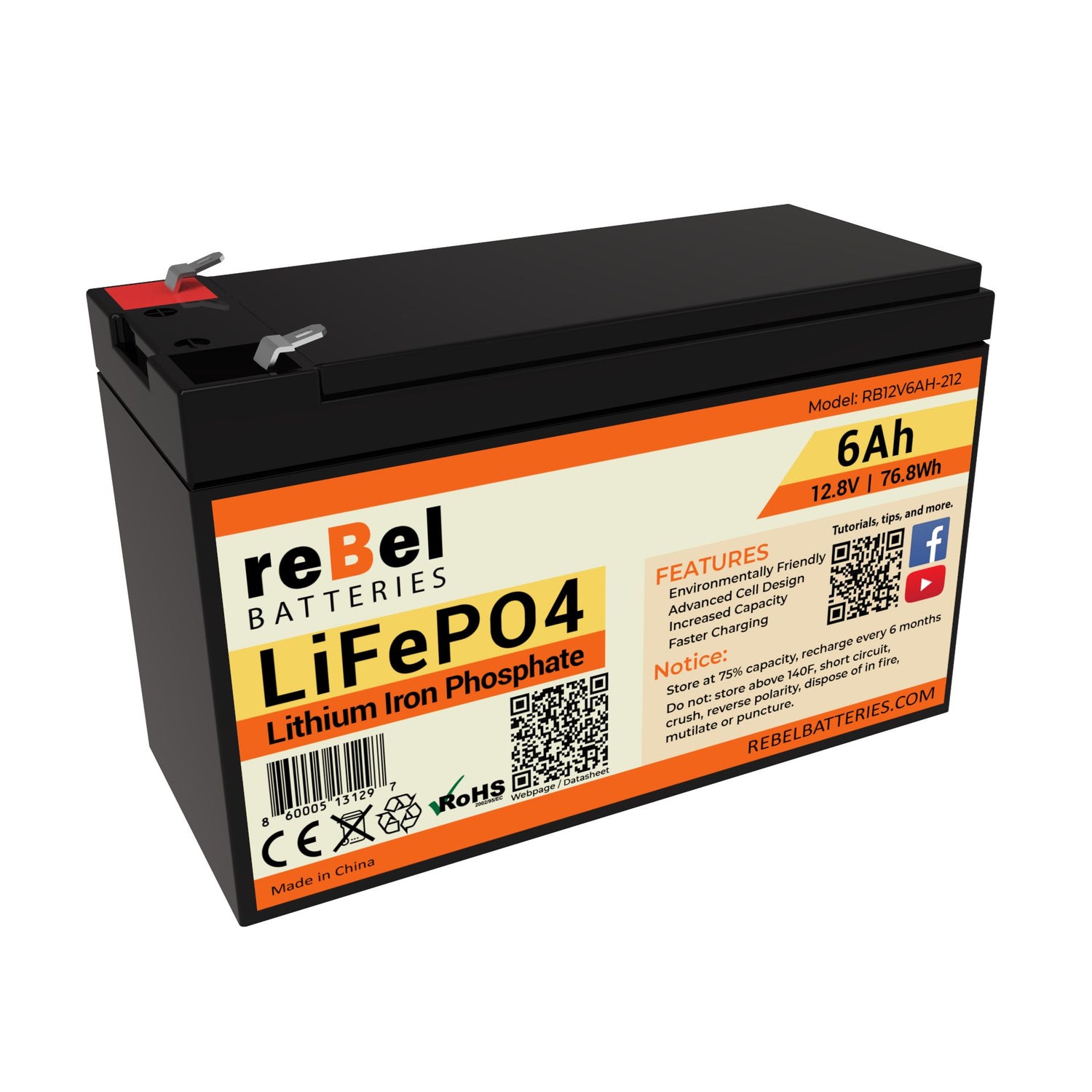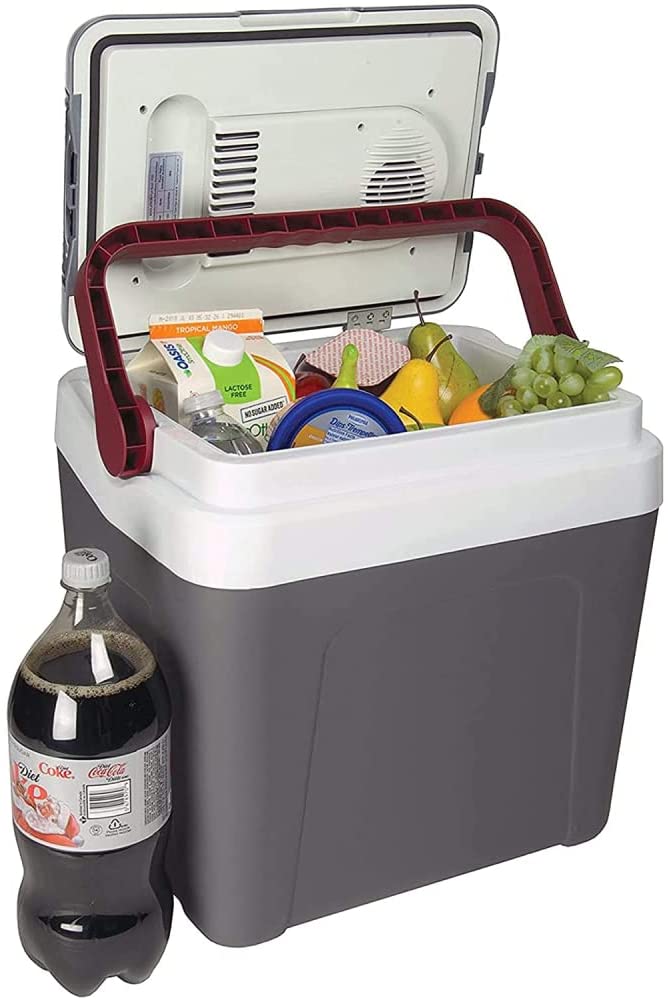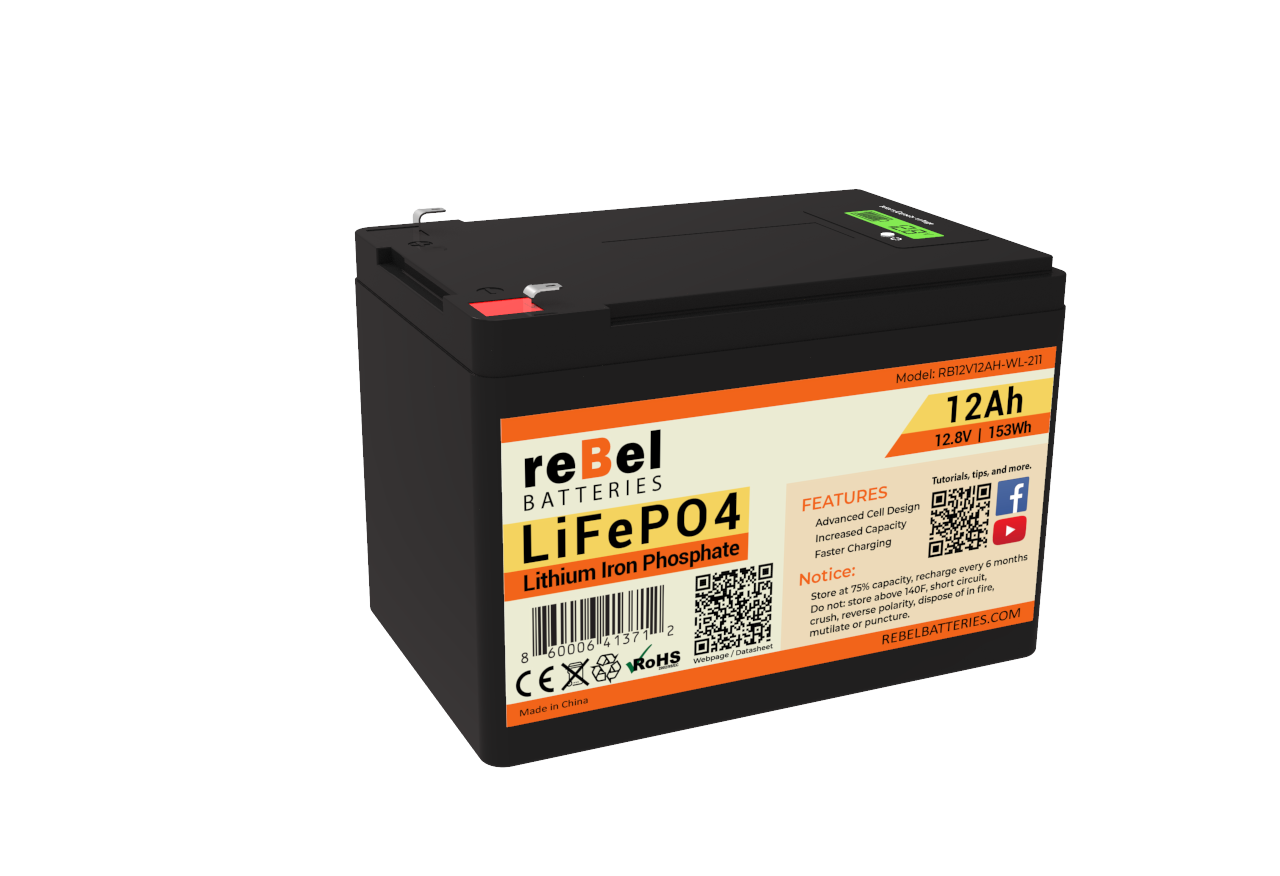I needed some batteries for testing various equipment to see if a Lithium Iron Phosphate battery could be used to replace its Led Acid Battery. I wanted batteries I could also take to someone's house and show them a Lithium Iron Phosphate battery that will work in whatever they need a battery for. reBel batteries had the perfect batteries to serve this purpose.
The quality of this battery was obvious as soon as I removed it from the box. It's solid and doesn't feel cheaply built. This battery has blade terminals both located on one end. The terminals are well secured to the top and the plus and minus signs are engraved on top of the case making it easy to identify the positive and negative terminals. Unlike most batteries that have lights to give an indication of how much capacity is left reBel batteries took this a step farther. The LCD display on top of the battery tells the voltage as well as how charged the battery is. Having a built-in voltmeter is something I had never seen on a battery before. I thought that was a nice feature. If you're visually impaired scanning software won't read this screen, but reBel may come out with a Bluetooth version of this battery in the future. In the meantime, a Bluetooth voltmeter works fine.
The display can be lit for about ten seconds with the press of the button below it. The button feels and sounds like a real heavy-duty switch that will withstand many presses. The LCD Display is well mounted. You can also buy this battery without the display if you're using the battery around water. Or you could probably silicone around it.
The case is plastic and feels solid. The battery is the same size as a standard Led Acid 7AH alarm or UPS battery so no modifications will have to be made to get it to fit.
If you're reading this considering a battery, know little or nothing about them and wonder why you should consider a Lithium battery? Two big advantages these batteries have over Led Acid batteries are they give you almost all of the capacity you pay for above 12V and last for thousands of cycles.
The max charge current for this battery is 3A and the max discharge current is 6A continuous.
For its size, this little battery packs a serious punch. Here are two real-world discharge tests. The first test was a 4.7 amp load. I ran this test after charging the battery and got over an hour above 12V. After discharging the battery three times I ran this test again and actually got four minutes longer above 12V. Here are the results of that test.
After the load had been applied for 30 seconds the voltage was 12.75V.
Fifteen minutes, 12.70V.
Thirty minutes, 12.61V, and the terminals weren't even warm to the touch.
Forty-five minutes, 12.53V.
One hour, 12.33V. This is the point when the voltage started falling faster.
One hour five minutes, 12.18V.
One hour nine minutes and a few seconds, 12.0V. A little over 4 minutes later the BMS turned the battery off at 9.7V. That was the voltage at my meter. The voltage of the cells would have been around 10V. When the BMS turns the battery off from low voltage you may have to connect a charger to turn the battery on again if the voltage doesn't recover enough to turn it on. This is a safety feature to keep the battery from being over-discharged.
The second test was a 2.8 amp load. After applying the load and giving the battery 30 seconds to stabilize the voltage was 12.84V.
One hour, 12.74V.
One hour and thirty minutes, 12.65V.
Two hours, 12.34V. The current at this point was a little over 2.5 amps.
Two hours ten minutes and a few seconds, 12.0V. I terminated the test at that point. The battery had already provided over 5 of the 6AH it claims to have. Pretty impressive.
If you buy one of these batteries you will notice the LCD on the battery shows a slightly higher voltage than your meter at the output terminals or in your system does. This is because the voltmeter in the battery is measuring the actual cell voltage. In any system, there's always some loss when electricity passes through electronics and cables. For example, at one point in a test on another battery my meter showed 12.77V and the LCD on the battery showed 12.9V. This voltage loss is very minimal and nothing to be concerned about. On the other hand, if you notice a big loss in voltage at your meter it could mean your wire size is too small to carry the load, you have a bad, dirty, or loose connection.
Can this battery be used in an alarm system?
I tried it in an old alarm system that wasn't being monitored and it worked flawlessly powering the alarm on battery power for several hours. The alarm isn't connected to household power anymore so I wasn't able to try its charging system, but, some research pointed out its charging voltage is between 14 and 14.4 volts. These batteries like a charging voltage of 14.6 volts. I noticed the BMS in mine turns the charge off before the voltage reaches 14.6V. So an alarms charging system should be able to charge this battery. I'll update this review if I get around to connecting the alarm. Even if the battery doesn't fully charge it should be over ninety percent charged and will still provide more power than you would get from a 7AH Led Acid Battery.
I recommend this battery to anyone needing a battery for fish finders, small lighting projects, and some toys. Depending on your particular current needs and the charging system of whatever you are using the battery to power it may also be an excellent long-lasting replacement for the Led Acid battery that come with home alarm systems, some kids scooters, and small UPS systems as well as a replacement for the battery in small 12V power boxes like the Coleman power mate. It isn't a good replacement for a battery in a jump starter though. Keep this in mind if trying this battery in a UPS. It will power the unit longer than the AGM battery that came with your UPS did. Some of the small home UPS systems were only meant to operate on battery power for a short time and don't have adequate heat sinking for prolonged use. With the AGM battery installed when you bought the unit this isn't a problem because the battery would die long before the UPS would be in danger of overheating. Because you get almost all of a Lithium Iron Phosphate Battery's capacity usable above 12V the UPS will be able to operate on battery power longer than its rated time, but, it may or may not be capable of being used on battery power longer than its rated time. If the UPS is under its maximum load it might overheat depending on the unit. If you're only using it under a light load this may not be an issue which brings me to the second thing to consider. This battery is only rated for 6A. If you're only using 50 watts from your UPS this battery may work fine. If you need more power you should use a larger battery.
In conclusion, this is a nice small and light battery with enough power to meet many 12V needs from solar to lighting. In my tests, it over delivered and after eight cycles showed no noticeable loss in capacity.



